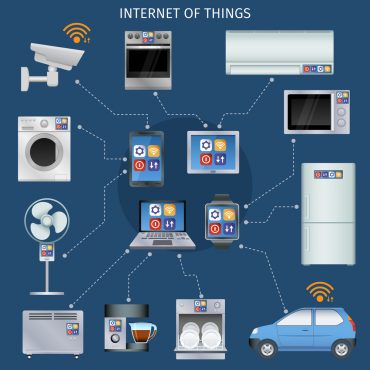
ROI for edge computing needs a deep drill-down and exacting metrics to determine how and where edge deployments deliver value.
With edge computing so varied across industries, the return on investment can be a challenge. With so much investment going on around the edge – Internet of Things devices, end-user environments, artificial intelligence, and digital twins – ROI needs to be clarified to enterprise leaders since there is little if any precedent for such approaches. Ultimately, as the tried-and-true management saying goes, “you can’t manage what you can’t measure.”
To date, “improving on practices in the field, industrial processes, and product design was based on incomplete, often delayed, data and on the assumptions of experts, according to a new report published by the Industrial Internet Consortium (IIC). Adding to the challenge is the varying use cases and types of returns, which can be significantly different industry by industry.
See also: Edge Application Technology Benefits All Industries
The wide variations in ROI potential from industry to industry seen from edge computing – as compared to potential costs – have been mapped in a report out of Capgemini, and the potential ROI scenarios for leading industries include the following:
- Telecommunications: Environment monitoring for telecom equipment, telecom base station’s remote monitoring and management, monitoring of inventory.
- Manufacturing: Capacity utilization and workload management, production asset maintenance, product quality optimization, manufacturing intelligence, operator productivity, product quality optimization.
- Consumer products: Monitoring shipment conditions (e.g., temperature and humidity), monitoring and controlling of climate conditions, manufacturing intelligence
- Retail: In-store Intelligence, smart shelves, staff workload management, inventory intelligence.
- Energy and utilities: Production asset maintenance, smart metering (Optimizing distribution networks and processes), asset tracking (man/machine/material), smart metering (optimizing distribution networks and processes), reduction of non-technical losses.
- Automotive: Manufacturing Intelligence, production asset maintenance, capacity utilization, and workload management, asset tracking(man/machine/material), supply adequacy with demand
Common Benefits Despite Industry Differences
While returns vary greatly from industry to industry, there are some uniform applications of benefits analysis that can be applied across the board, the IIC report states. The difference is seen in the metrics that are needed to capture the degree of ROI being seen across various implementations – they need to be expanded across the breadth of enterprises.
Operational performance, product or service quality, business effectiveness, and properties such as security, safety, or reliability have all been commonly measured and subject to metrics and targets for some time, the report’s authors state. “However, these metrics have often been designed for a narrow purpose and have served a rather accessory monitoring role. Digital transformation solutions evolve in complexity and interdependency, and the IoT physical and operational context they derive their insights and value from is always changing. It is expected that metrics and related monitoring functions will play a more active and dynamic role for composing, configuring, controlling, and managing these systems as they evolve.”
The return from edge implementations needs to measured at two levels, the IIC continues. Business model validation and improvement “focuses on all aspects of monitoring the financial and strategic KPIs of the solution, measuring overall IIoT maturity and implementing corrective
actions if needed,” while solution validation and improvement “focuses on monitoring and improving the operational side of the solution from the perspective of functionality, non-functional SLAs, and other system characteristics, including trustworthiness properties.”
The study’s authors point to ROI areas seen across industries within the following areas:
- Process efficiency: “Improved agility, speed and reduction in time to market, business process optimization, reduced operation costs, increases in productivity and labor efficiency, enhanced intra-organization collaboration and better integration with greater operational environment and systems.”
- User experience: “Improved customer satisfaction, added value for users, better service and customization.”
- Product quality: “Reduction of errors and defects, better tracking, measurement and control of quality factors, better consistency in production quality and delivery.”
- Asset management: “Better tracking, monitoring, and control of physical assets such as machines, tools and other resources or equipment, improved asset utilization, processing, maintenance efficiency (preventive, predictive) and cost efficiency.”
- Business innovation: “New revenue streams with innovative business models and enhancement of existing models. Contributing factors include new services or products, product enhancement, combinations of product and service, opportunities to create services, and faster research, development, and engineering processes.”
- Governance: “Facilitating strategic decision-making, assessing and assuring compliance to policies and regulations. This also includes informing management strategy to balance dimensions such as product quality, cost, delivery timeliness, and environment or regulation impact.”
- Risk management: “Identifying, quantifying and managing the risks in business and operations, enabling risk mitigation, monitoring and improving trustworthiness (security, safety, reliability, resilience, privacy) with an understanding of their interdependencies and enabling assurance.”
Interestingly, the IIC study’s authors also point out that cost reduction and revenue increases in and of themselves are too vague to be considered ROI measures, as they are “not considered as value areas because they are a by-product of any improvement.” ROI for edge computing, then, needs a deeper drill-down and more exacting metrics to determine how and where they are delivering value. While the returns differ across industries, all approaches still require the same types of measurements – which are key for communicating expectations as well as tracking progress.







